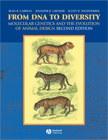Why blogging is good (also for your thesis)
Sometimes I wonder if my blogging activity is harmful for the progress of my thesis. But, if we take into account that the topics I blog about are the same that are covered in my thesis, I think that not only it doesn't harm but it's actually doing me good:
1. I get to read a lot of articles, not only about my research topic but also many others conceptually related to the whole area. This helps to acquire a broad perspective of where my project fits and helps developing an integrative frame of mind.
2. I write reviews of recent articles as well as original essays. Doing so, my scientific writing skills improve, especially exercising scientific texts reading comprehension, ability to synthesize the main ideas (mine or from other people's papers) and the actual writing skills (scientific redaction, english grammar).
3. Since the blog is information-rich, web searching tools (Google, for example) will bring people interested in what I write about, therefore I will gain a lot of feedback, both from specialists --who will correct me, if I'm wrong; giving me publicity among fellows of the field, and, in the end, increasing my contacts network-- as well as from aficionados of all levels --who will serve me to test my divulgative speech.
Allow me to spare a bit of modesty here: even my bosses agree that my writing skills are good and keep improving, which will become handy for articles and future project submissions.
However, it seems that I'm the only enthusiastic evo-blogger in my institute (Evo-bloggers in het IBL). And that's in spite of having our own blog server!
To be honest, I didn't know we did have one until I received a mail about the weblog of the 'Instituutsraad', and I guess that I'm not the only one. In fact, I still don't know how do they work (who can post and/or comment and how to) but I think it is definitely a good move for the Institute (only if all the sections would get to use them, and for more than a simple on-line blackboard).
And not only the departments as such, but the individuals themselves, should start using the new technologies. Not only is good for yourself (as I wrote above), but also for the whole community: you are helping to enrich the web with information, helping with the difussion of knowledge.
Quoting Rino Zandee, from the Theoretical Biology Section (and showing less and less modesty):
1. I get to read a lot of articles, not only about my research topic but also many others conceptually related to the whole area. This helps to acquire a broad perspective of where my project fits and helps developing an integrative frame of mind.
2. I write reviews of recent articles as well as original essays. Doing so, my scientific writing skills improve, especially exercising scientific texts reading comprehension, ability to synthesize the main ideas (mine or from other people's papers) and the actual writing skills (scientific redaction, english grammar).
3. Since the blog is information-rich, web searching tools (Google, for example) will bring people interested in what I write about, therefore I will gain a lot of feedback, both from specialists --who will correct me, if I'm wrong; giving me publicity among fellows of the field, and, in the end, increasing my contacts network-- as well as from aficionados of all levels --who will serve me to test my divulgative speech.
Allow me to spare a bit of modesty here: even my bosses agree that my writing skills are good and keep improving, which will become handy for articles and future project submissions.
However, it seems that I'm the only enthusiastic evo-blogger in my institute (Evo-bloggers in het IBL). And that's in spite of having our own blog server!
To be honest, I didn't know we did have one until I received a mail about the weblog of the 'Instituutsraad', and I guess that I'm not the only one. In fact, I still don't know how do they work (who can post and/or comment and how to) but I think it is definitely a good move for the Institute (only if all the sections would get to use them, and for more than a simple on-line blackboard).
And not only the departments as such, but the individuals themselves, should start using the new technologies. Not only is good for yourself (as I wrote above), but also for the whole community: you are helping to enrich the web with information, helping with the difussion of knowledge.
Quoting Rino Zandee, from the Theoretical Biology Section (and showing less and less modesty):
Er zouden meer AIO' s [en stafleden] het goede voorbeeld van Max moeten volgen.







